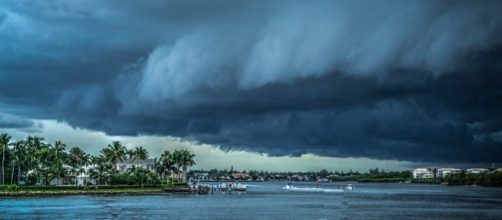Since 2015, the Met Office has been naming the most severe storms. The first round of naming started in October with Abigail and ended in September of the following year with Katie, 11 storms later. On the other hand, the season 2016-17 only saw five storms worth naming, from Angus in late November to Ewan at the end of February. The third, and current, set of Names came out in September 2017 and it is, as usual, constituted of 21 names.
Storm names: from A to Z
Storms are named in case of an Amber or Red warning issued, which means medium to high severity, but also in some cases of Yellow warning events.
If the Storm was already named elsewhere, international regulations establish that the name must be kept and used by all the meteorological organizations of the affected countries. Otherwise, a new name is provided.
Each storm is assigned a name that begins with a different letter of the alphabet: so the name of the first storm of the year will begin with A, the second with B, and so forth. Moreover, in compliance with the international storm naming conventions, the letters Q, U, X, Y, and Z are not included for the difficulty of finding names with these initials. Furthermore, names are supposed to alternate in gender. Finally, the first name of the year will be a female one if the previous year began with a male name and vice versa.
In 2015, before starting the naming process, the Met Office runs a pilot survey to collect a database of potential names. British and Irish citizens were asked to contribute via social media, and the list of names soon reached 10,000 elements. Sadly, not all the 10,000 names collected were in fact maintained in the list of assignable ones. First of all, a group of names were excluded because they were duplicates of names assigned by other countries to their own storms. Also common, was to find names of popular retailers among those selected, which were left out as well. In a letter to Matt Burges, a journalist at Wired, it can be seen that some names were excluded because they were not ‘proper’.
A list of those includes Apocalypse, Bilbo, Cyclops, Excalibur, HolyFlyingCircus, KingHenryV, Magneto, Megatron, Smaug, Stormageddon, Valkyrie, and Voldemort.
As for the two previous years, the 2017-18 list was compiled selecting 21 names among those suggested by the public and has been announced during the European Conference for Applied Meteorology in Dublin. The first storm of 2017 will be called Aileen, followed by Brian and, if the season will be particularly rainy, we will end with Winifred.
Storm names: the reason why
Names are given to storms in order to make them more relatable for those affected. In fact, a survey conducted in 2016 has proven that people were more aware and more action was taken when storms were named.
An example reported by the Met Office is storm Doris, which scored 89 percent in awareness. Moreover, 94 percent of respondents found the warning useful, while 82 percent said that taking action was the right choice.
So far, storm naming has been found to be a successful move. As Derrick Ryall, Head of Public Weather Services at the Met Office affirmed: “Last year was another successful pilot of the storm naming project and it’s great to be now making it operational. Naming storms has been proved to raise awareness of severe weather in the UK, crucially prompting people to take action to prevent harm to themselves or their property.”


